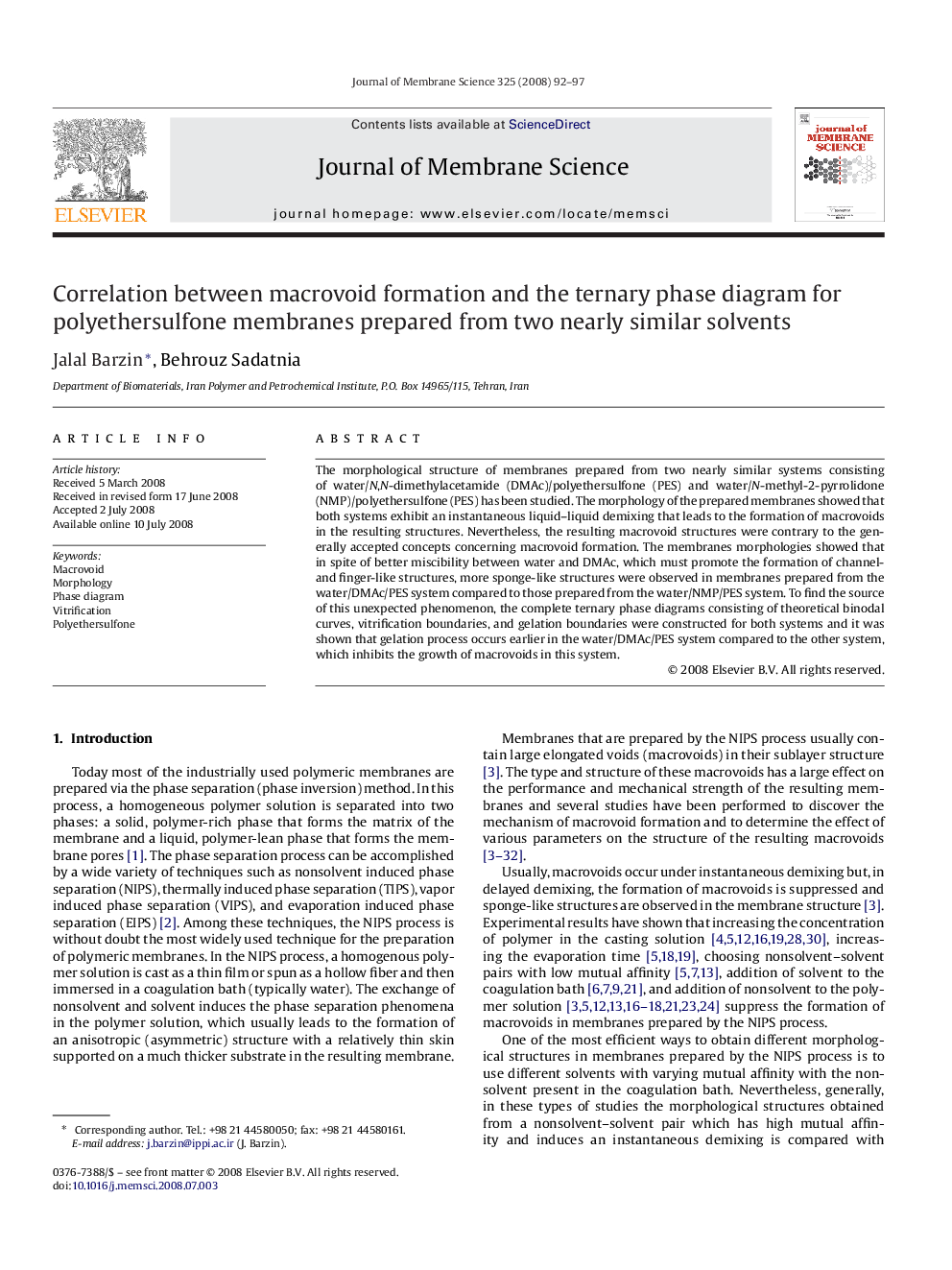| Article ID | Journal | Published Year | Pages | File Type |
|---|---|---|---|---|
| 637711 | Journal of Membrane Science | 2008 | 6 Pages |
Abstract
The morphological structure of membranes prepared from two nearly similar systems consisting of water/N,N-dimethylacetamide (DMAc)/polyethersulfone (PES) and water/N-methyl-2-pyrrolidone (NMP)/polyethersulfone (PES) has been studied. The morphology of the prepared membranes showed that both systems exhibit an instantaneous liquid-liquid demixing that leads to the formation of macrovoids in the resulting structures. Nevertheless, the resulting macrovoid structures were contrary to the generally accepted concepts concerning macrovoid formation. The membranes morphologies showed that in spite of better miscibility between water and DMAc, which must promote the formation of channel- and finger-like structures, more sponge-like structures were observed in membranes prepared from the water/DMAc/PES system compared to those prepared from the water/NMP/PES system. To find the source of this unexpected phenomenon, the complete ternary phase diagrams consisting of theoretical binodal curves, vitrification boundaries, and gelation boundaries were constructed for both systems and it was shown that gelation process occurs earlier in the water/DMAc/PES system compared to the other system, which inhibits the growth of macrovoids in this system.
Related Topics
Physical Sciences and Engineering
Chemical Engineering
Filtration and Separation
Authors
Jalal Barzin, Behrouz Sadatnia,
